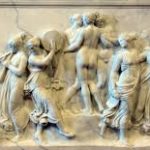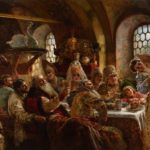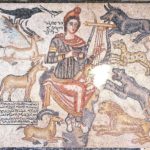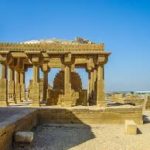In Latin the name “forum” means ” a place out of doors” and comes from the root forms, meaning outside. The Roman forums began as an outdoor meeting place, something like a village of commons, where people from the various tribes who occupied Rome’s seven hills in prehistoric times met to talk and trade, to discuss matters relating to the common good, and later to worship their gods and bury their dead.
Ancient Roman Forums
It originally was a marsh, but the Romans drained the area and turned it into a center of political and social activity. The Forum was the marketplace of Rome and also the business district and civic center. It was expanded to include temples, a senate house, and law courts.
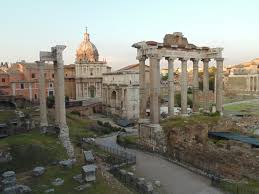
Its location is a low, shallow valley between the Palatine, Capitoline, and Esquiline Hill. Fed by the springs and close to the Tiber river, much of the area was swampy.
It was the main marketplace and business center, where the ancient Romans went to do their banking, trading, shopping, and marketing. It was also a place for public speaking.
Roman Forums for festivals and religious ceremonies
People thronging the Forum would stop and listen, then wander away to do their shopping, and perhaps leave a gift at a temple for one of their gods. The Forum was also used for festivals and religious ceremonies. It was a very busy place.
From the early fifth century through the first century BC the Forum expanded. As Rome’s conquests brought in vast amounts of wealth, the temples, the shrines, sanctuaries and law courts all proliferated.
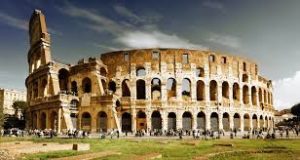
But by the middle of the first century BC the Roman Forum was providing inadequate for imperial ambitions and a rapidly growing population, so the rulers of Rome built their own forum: the Imperial forums.
Forum of Augustus
The Forum of Augustus, Nerva, Vespasian, and Trajan, they were larger and grander in some cases than the Roman Forum and were built close to it. With the completion of the Forum of Trajan in the early second century AD, the total area covered by all the forums was about twenty-five acres.
The zone included thirteen temples and three law courts( most of them faced with white marble and roofed with gilt bronze tiles), eight triumphal arches, the Senate House, the state archives, more than a mile of porticoes supported by well bronze capitals), public libraries.
The northern part of Roman Forum
The northern part of the Ancient Roman Forum was occupied by the ‘Comitium’ (square of meetings) where political reunions and the main celebrations of the city took place.
The southern part of Roman Forum
The southern part of the Ancient Roman Forum was where the marketplace was located and farmers and traders offered their goods and exchanged services. The Forum was also the place of worship of gods.
For centuries the Ancient Roman Forum didn’t undergo any change and maintained its role as an instrument of dynastic representation.
